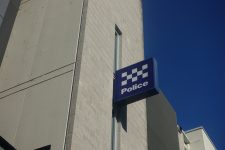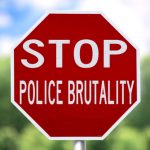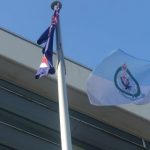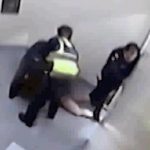NSW Police Officer May Face Criminal Charges Over Brutal Assault

The Byron Bay police officer who struck a naked teenager 18 times with his baton during a violent arrest could lose his job and potentially face assault charges over the incident.
In his closing submission at the second of two hearings by the Law Enforcement Conduct Commission (LECC) into the young man’s arrest, the barrister assisting the Commission, Terrence Rowles, submitted that striking the 16-year-old 18 times amounted to “grossly unnecessary force”.
During the incident, police tasered and doused the teen with capsicum spray. One of the struck the young man, who has Aspergers Syndrome, repeatedly with a baton as the teen lie on the ground and begged for help. The officer gave a formal statement attempting to justify his actions as an attempt to subdue the youth, not knowing the incident was captured on camera.
Mr Rowles submitted that “The Commission should find he unjustifiably used grossly unnecessary force… and attempted to mislead the Commission as to the circumstances in which, and the reasons for which he did so.”
“It is difficult to avoid the conclusion that this account was a fabrication designed to justify by reference to the acceptable use of baton strikes, which was otherwise known to the officer to be unreasonable”.
Position should be terminated
Mr Rowles further submitted that the LECC should recommend that the Police Commissioner remove the officer under section 181D of the Police Act, and seek advice from the NSW Director of Public Prosecutions (DPP) about laying assault charges.
The defence lawyer representing the alleged offender made submissions in writing rather than address the LECC in person. The lawyer submitted that the officer’s actions fell into a ‘grey area’.
Actions ‘influenced’ by prior incident
The LECC also heard the actions of the officers may have been influenced by a prior incident in Byron Bay a couple of weeks earlier, when officers had to deal with a naked 23-year old man who allegedly threatened to kill himself near the Byron Bay Lighthouse.
It was reported that while under the influence of LSD at the time, the man threw himself head-first into the windshield of the police car, then jumped on the bonnet and kicked in the windscreen, showering officers with glass. The man is alleged to have then jumped off the bonnet and punch and head-butt the passenger side window.
Mr Rowles submitted, however, that there was a significant difference between the two incidents – there was no evidence that the 16-year old youth represented a threat to police or anyone else. To the contrary, both the CCTV footage and bystander video of the incident showed he represented no threat at all, as he was on the ground crying for help.
Mr Rowles told the LECC that police were lacking “even the most rudimentary plan” for dealing with the traumatised teen.
The LECC is now considering all evidence and submissions, and a formal decision is expected in coming weeks.
What is reasonable force in New South Wales?
The incident shines a spotlight once again on police brutality, and has triggered debate about what constitutes ‘reasonable force’ in New South Wales.
Section 231 of the Law Enforcement (Powers and Responsibilities) Act 2002 (NSW) provides that “A police officer or other person who exercises a power to arrest another person may use such force as is reasonably necessary to make the arrest or to prevent the escape of the person after arrest.”
Any force above that which is reasonably necessary to effect the arrest can amount to an assault, and offenders may face criminal charges commensurate with the nature of the act and any injury causes.








